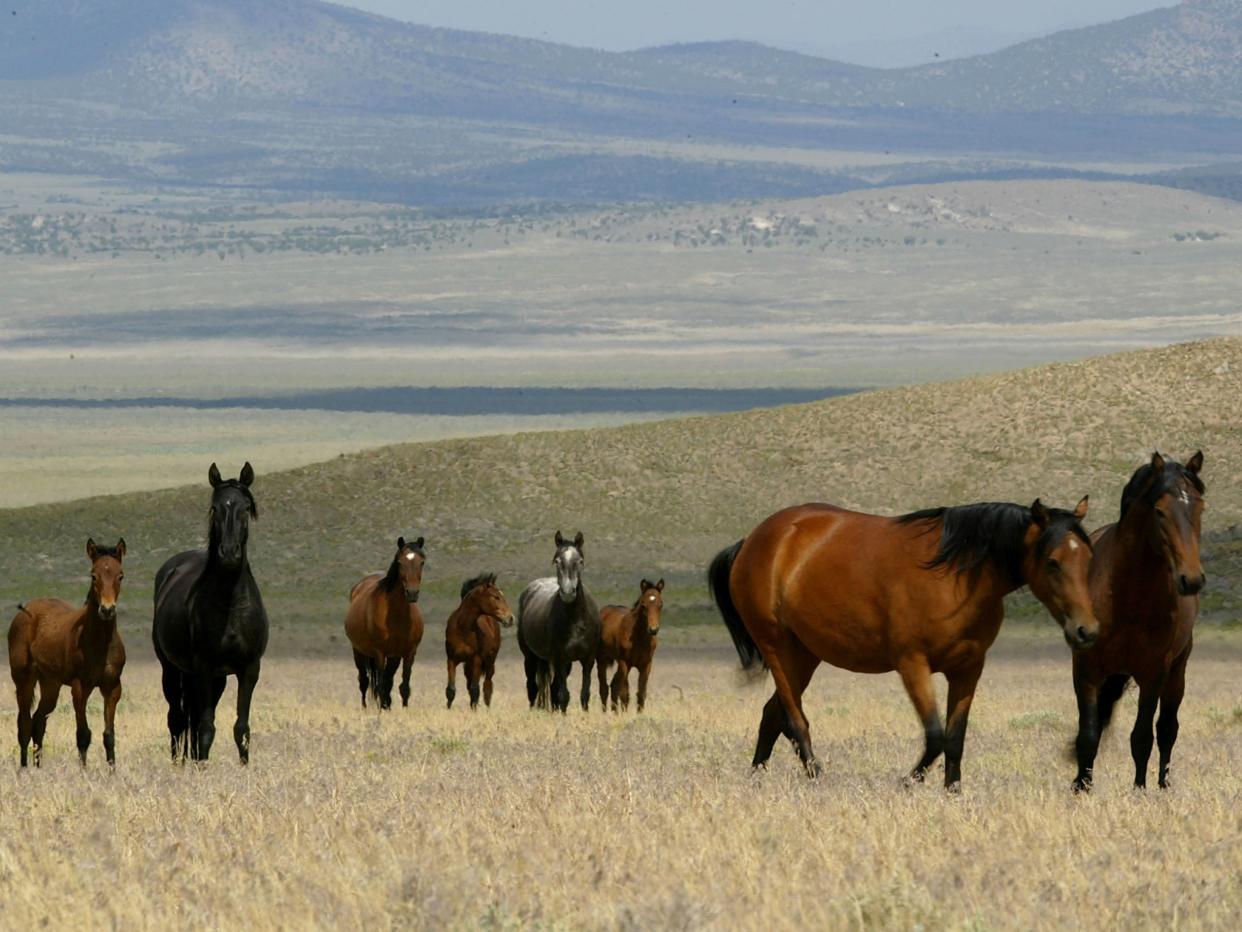Animal experts say new Tesla factory could harm wild horses, as it used animals to tempt people to Nevada base

A group of wild horses walks through a field on 7 July 2005 in Eureka, Nevada
((Getty Images))Tesla CEO Elon Musk recently boasted about the proximity of the electric car company’s Nevada plant to wild horses, but experts have said the company’s presence could harm the local population of the animal.
In a tweet last week, Mr Musk mentioned the proximity of the company’s new Gigafactory to a wild horse population as a perk of working for Tesla.
“Come work at the biggest & most advanced factory on Earth! Located by a river near the beautiful Sierra Nevada mountains with wild horses roaming free,” the CEO tweeted.
Mr Musk posted the message above an advert to apply to work at the Gigafactory, which has been created to build batteries for the company’s vehicles and is expected to be the biggest building in the world once completed, according to Insider.
The new factory, which will be part of the Tahoe-Reno Industrial Centre that houses several factories, is situated in the middle of a range home to a large population of wild horses.
However, despite the company touting the proximity to wild horses as a perk of working at the factory, experts have raised concerns about the damage plants in the area are having on the horses.
As factories have been built nearby and the horse population in the area has increased, the amount of horses has reached an unsustainable level, according to the Bureau of Land Management in Nevada.
The area is home to around 50,000 wild horses, but the bureau has claimed that the population of the animal should be around 25 per cent less for them to thrive.
Dr Barry Perryman, a rangeland ecology professor at the University of Nevada, told the Nevada Agriculture Experiment Station that horses tend to overgraze when they lose land or become overpopulated.
He explained that overgrazing “creates a massive problem for the rangeland because the horses are putting unmanaged pressure on forage all day, every day, for the entire year.
Come work at the biggest & most advanced factory on Earth! Located by a river near the beautiful Sierra Nevada mountains with wild horses roaming free. https://t.co/Nimv3BvQXI
— Elon Musk (@elonmusk) January 3, 2018
“Eventually, that landscape reaches a threshold where native high-forage-value plants lose the ability to compete with unpalatable, undesirable, or nonnative species.”
Corenna Vance, the founder of Wild Horse Connection, told The New York Times on Tuesday that the factories also in the area are already causing issues for the horses as the construction of buildings and an increased human presence is not ideal for their safety.
“We get about five emergency calls a month in the slow season,” Ms Vance told the Times. “Horses in traffic, on the wrong side of fencing, vehicular, train accidents, sick or ill horses.”
She said that the issue becomes worse following further building, as “horses have migration patterns, and when a development comes in, it cuts that off and there’s more interactions with people”.
In order to try and offset the harm caused from the factories, Jeffrey Berns, who owns a building nearby, told the Times that his blockchain company spends around $300,000 (£217,543) a year to maintain the safety of the horses in the area.
However, Tesla has not yet announced any policies to help protect the horses located near its factory. The Independent has contacted Tesla for comment and asked for any details on how the company plans to protect the local horse population.
Read More
UK Covid-19 vaccinations: Latest figures
U.S.'s John Kerry in China for talks ahead of climate summit
Months after hack, US poised to announce sanctions on Russia

